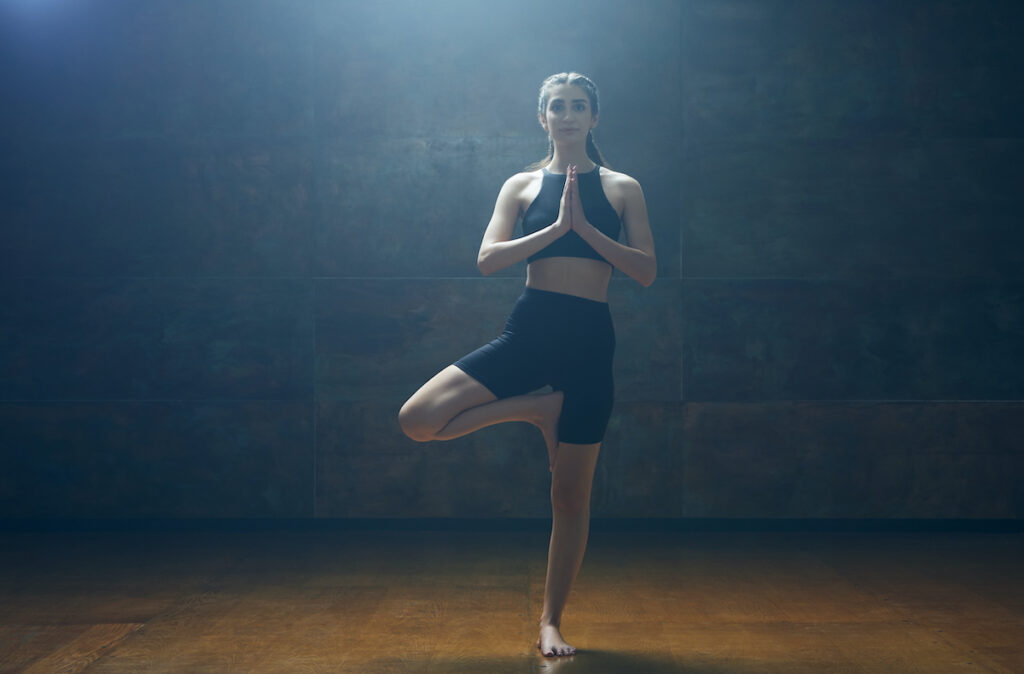10Yoga Asanas for Beginners
Here are some newbie-pleasant yoga poses (asanas) which might be easy to perform and provide a stable foundation for constructing a yoga exercise:
- Mountain Pose (Tad Asana)
How to do it: Stand tall with your toes collectively, arms at your aspects, and shoulders relaxed. Distribute your weight flippantly across both feet. Engage your thighs and center and extend via the backbone.
Benefits: Improves posture, stability, and frame attention. It serves as a basis for plenty different standing poses.

- Downward-Facing Dog (Adho Mukha Svan asana)
How to do it: Start for your fingers and knees. Lift your hips closer to the ceiling, forming an inverted V-form. Keep your palms shoulder-width aside and your toes hip-width aside. Try to straighten your legs and produce your heels towards the mat, however it’s k in the event that they don’t contact.
Benefits: Stretches the hamstrings, calves, and spine. Strengthens the legs and arms at the same time as calming the thoughts.

- Child’s Pose (Bal asana)
How to do it: Kneel on the ground, sit down lower back on your heels, and fold forward, extending your fingers in the front of you. Rest your forehead on the mat. You can spread your knees wide or preserve them together.
Benefits: Gently stretches the back, hips, and thighs. It’s a exquisite pose for rest and relieving strain.

- Cat-Cow Pose (Marja Yasana – Bitila asana)
How to do it: Start on all fours with your wrists without delay below your shoulders and your knees underneath your hips. Inhale and arch your back (Cow Pose), lifting your head and tailbone. Exhale and round your back (Cat Pose), tucking your chin and pelvis underneath. Alternate among these positions along with your breath.
Benefits: Increases flexibility in the spine, improves posture, and allows with back ache.

- Warrior I (Virabhadra Ana I)
How to do it: Step one foot ahead right into a lunge, bending your front knee while retaining your back leg directly. Lift your fingers overhead, together with your arms facing every different. Keep your hips rectangular to the front.
Benefits: Strengthens the legs, opens the hips, chest, and shoulders, and improves focus and balance

- Warrior II (Virabhadrasana II)
Benefits: Builds leg strength, improves persistence, and opens hips and chest. Enhances awareness and balance.
How-to do it: From Warrior I, open hips and stretch hands out in contrary directions. Gaze over the front hand and preserve, then transfer facets.

- Tree Pose (Vrksasana)
Benefits: Enhances balance, core power, and stability. Increases cognizance and mental readability.
How-to do it: Stand on one leg, deliver different foot to internal thigh or calf (keep away from knee). Place fingers at the heart or attain overhead. Switch aspects after balancing.

- seated Forward SFold (Paschimottanasana)
Benefits: Stretches hamstrings, lower returned, and backbone. Helps calm the mind, relieving strain and tension.
How-to do it: Sit with legs extended. Inhale, prolong backbone; exhale, fold ahead, achieving towards your toes. Hold and breathe.

- Bridge Pose (Setu Bandhasana)
Benefits: Strengthens glutes, again, and hamstrings. Opens chest and shoulders, stimulates move, and allows lessen again pain.
How-to do it: Lie on your again, bend knees, and press through toes to boost hips. Clasp palms below hips for delivered support if comfortable.

- Corpse Pose (Savasana)
Benefits: Encourages rest, reduces stress, and allows reset the frightened machine.
How-to do it: Lie flat on your again, palms at your aspects, and let toes fall open. Close eyes, consciousness on gradual respiratory, and relax the whole body.


